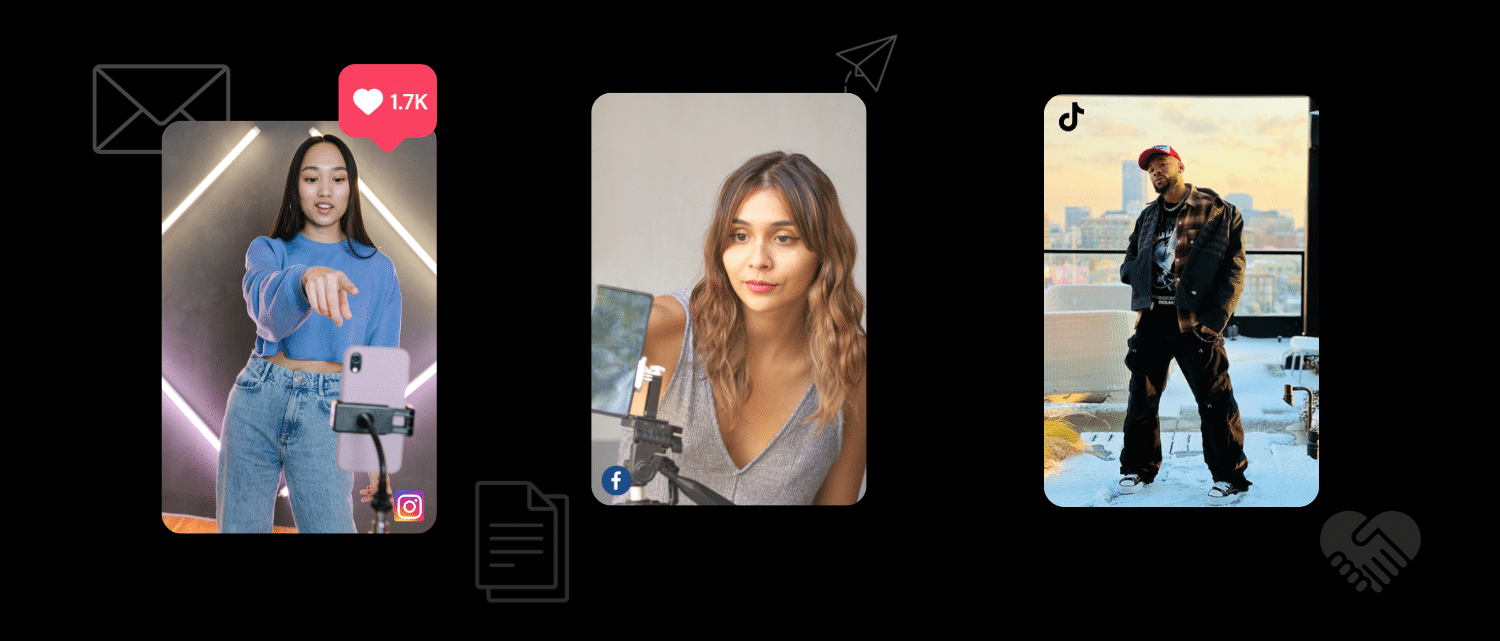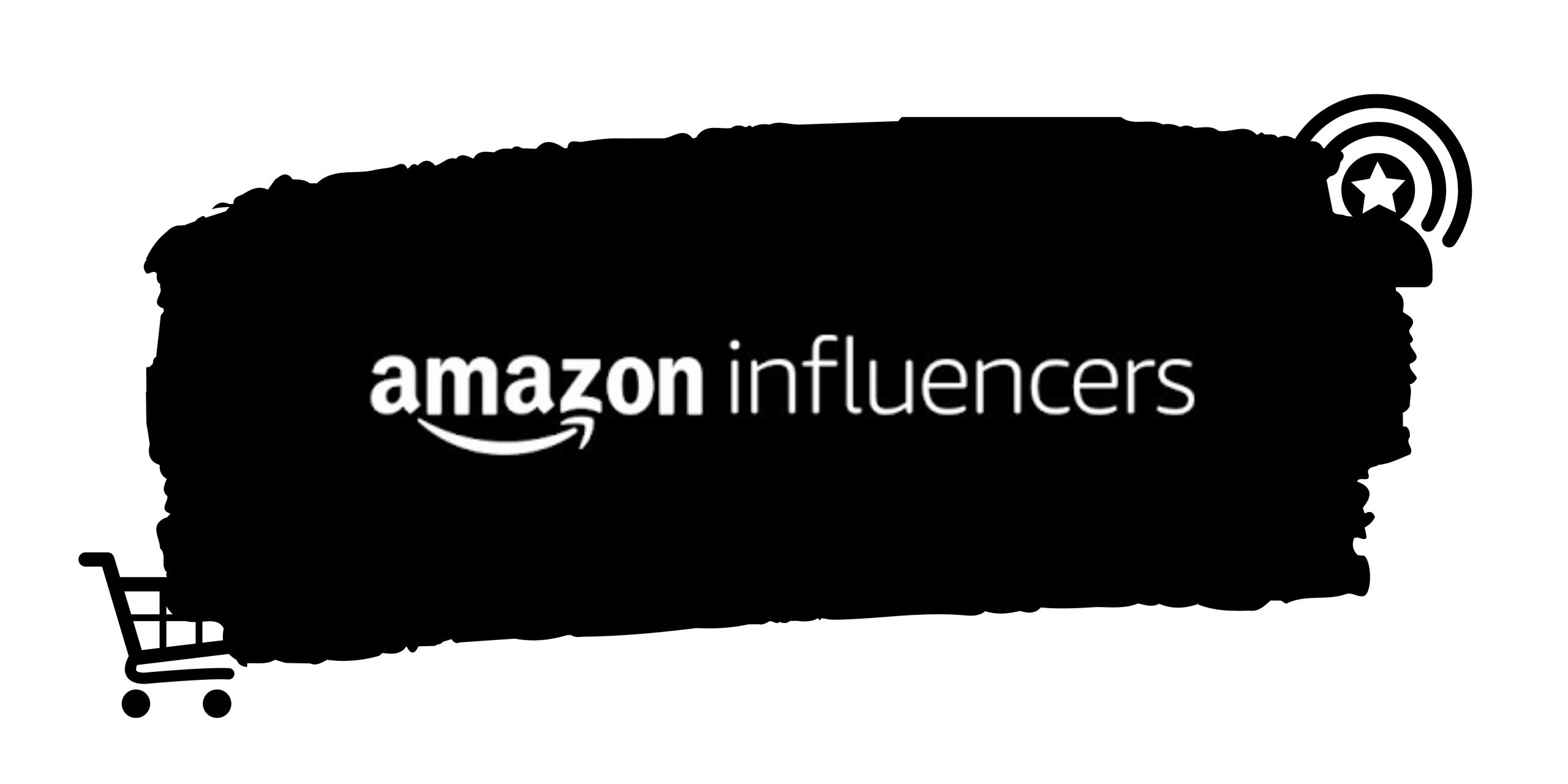Welcome to the world of influencer marketing, where connections are currency and authenticity rules the digital realm.
This report delves into the fascinating concept of influencer pricing – the beating heart of Influencer collaborations that drive brands and trends forward.
First things first, let’s paint a clear picture: What exactly is influencer pricing? Why does it matter? These questions are the compass guiding us through this journey. Then, we’ll take a peek at the roadmap ahead so you know exactly what to expect.
So, whether you’re a brand looking to partner up or an influencer aiming to understand your worth, buckle up as we venture into the captivating universe of influencer pricing. Let’s kick things off by understanding the very essence of it all.
Factors Affecting Influencer Pricing
Follower count and engagement rate
- Follower Count: Brands often value influencers with a large follower count because of their potential reach. However, recent trends emphasize the importance of quality over quantity.
- Engagement Rate: This metric measures how actively an influencer’s audience interacts with their content. A high engagement rate suggests that followers are genuinely interested in the influencer’s content.
Niche and industry relevance
- Niche Expertise: Influencers who focus on a specific niche or industry often develop a deep understanding of their audience’s preferences.
- Audience Alignment: Influencers with an audience that matches the target demographic of a brand’s product or service are more likely to yield successful campaigns.
Content format (e.g., video, image, story)
- Video Content: Videos are engaging and allow influencers to communicate more complex messages. However, they often require more time, production, and editing, leading to potentially higher pricing.
- Image Content: Static images are quicker to produce and may have lower production costs than videos. They are effective for showcasing products visually. You can also convert images to PDF for wider online distribution.
- Story Content: Temporary story formats are great for creating a sense of urgency or exclusivity but also have a short lifespan. Due to their ephemeral nature, pricing may vary.
Geographic location
- Cost of Living: Influencers in regions with higher living costs might charge more to sustain their lifestyles. Conversely, influencers from areas with lower living costs may offer competitive pricing.
- Regional Relevance: Influencers with a strong presence in a specific area are highly valuable for location-specific campaigns. Their audience likely includes people from that region, enhancing campaign effectiveness.
Influencer’s reputation and credibility
- Track Record: Brands prefer collaborating with influencers with a history of successful campaigns and positive partnerships. A proven track record adds to an influencer’s value and may justify higher pricing.
- Authenticity: Influencers who maintain authenticity and genuine connections with their followers are more likely to influence purchasing decisions. Brands are willing to pay more for influencers who can provide authentic recommendations.

Common Influencer Pricing Models
1. Pay per post: Pay per post is one of the most straightforward pricing models. Influencers charge a fixed fee for each post they create on behalf of a brand.
Pay per post is one of the simplest pricing models. Influencers charge a fixed fee for each post they create on behalf of a brand.
The fee can vary based on factors like the influencer’s follower count, engagement rate, niche, and the complexity of the content.
This model provides clarity for both parties, as brands know exactly what they’re paying for, and influencers can estimate their earnings per campaign.
2. Cost per thousand followers (CPM
CPM is based on the influencer’s follower count. In this model, the influencer charges a certain amount per thousand followers they have.
For instance, if an influencer charges $10 CPM and has 100,000 followers, the total fee would be $1,000.
While this model considers follower count, it might not consider the actual engagement levels or niche relevance.
3. Cost per engagement (CPE)
Cost per engagement focuses on the influencer’s ability to drive interactions with their content.
Brands pay the influencer based on the number of likes, comments, shares, or other engagement metrics their posts receive.
This model emphasizes the quality of interactions and can be a good fit when seeking tangible audience involvement.
4. Affiliate partnerships and commission-based pricing
In affiliate partnerships, influencers earn a commission on sales generated through unique affiliate links or codes.
This model ties the influencer’s earnings directly to the results they deliver. It’s particularly effective for influencers with a strong track record of driving conversions.
The commission rate can vary and is often negotiated between the brand and influencer.
Influencer Pricing Across Different Social Media Platforms
| Follower Count | Instagram Post | Instagram Story |
| $1,000 – $10,000 | $50 – $500 | $25 – $150 |
| $10,000 – $50,000 | $150 – $1,000 | $75 – $300 |
| $50,000 – $500,000 | $500 – $5,000 | $200 – $800 |
| $500,000 – 1M | $2,000 – $10,000 | $500 – $1,500 |
| 1M+ | $10,000 – $100K+ | $2,000 – $5,000+ |
Looking for influencers? We have the best ones
Instagram Influencers Pricing
1. Follower Count and Category:
- Micro-Influencers: Those with around 1,000 to 10,000 followers may charge $50 to $500 per post, depending on engagement rates and niche relevance.
- Macro-Influencers: With follower counts of 10,000 to 100,000, they might charge $500 to $5,000 per post, leveraging a larger audience and often higher engagement.
- Mega-Influencers: These influencers have over 100,000 followers and can command fees from $5,000 to several tens of thousands of dollars per post, considering their significant reach and potential impact.
2. Engagement Rate and Authenticity:
Influencers with higher engagement rates (likes, comments, shares) often charge more because their audience is more engaged and likely to respond to campaigns.
3. Content Quality and Format:
Influencers who create high-quality, creative, and visually appealing content, particularly in formats like videos or carousel posts, may charge more due to the effort involved.
4. Niche and Industry Relevance:
Instagram influencers in highly specialized or sought-after niches may charge a premium due to the specificity of their audience and expertise.
5. Geographic Location:
As mentioned earlier, influencers’ location can influence pricing based on their local market’s cost of living and the target audience’s location.
Impact of Instagram’s Algorithm Changes on Pricing:
Instagram’s algorithm changes can influence influencer pricing in several ways:
1. Engagement and Visibility:
Algorithm changes prioritizing content from friends and family over brands might lead to declining organic reach.
This could affect influencers’ engagement rates, potentially leading to adjustments in pricing as brands assess the overall value.
2. Need for Quality Content:
Algorithm changes encourage high-quality, engaging content that sparks meaningful interactions.
Influencers who consistently deliver such content may see increased demand, potentially allowing them to command higher fees.
3. Paid Reach and Boosted Posts:
As organic reach becomes more challenging, influencers and brands may invest more in paid promotion to ensure their content reaches the intended audience.
This could influence pricing strategies, as campaigns may require additional advertising budgets.
4. Long-Term Partnerships:
Brands might seek longer partnerships to counter the potential volatility of algorithm changes.
Influencers with established credibility and strong audience relationships may benefit from such arrangements and adjust their pricing accordingly.
In conclusion, influencer pricing on Instagram is influenced by a combination of factors, and the impact of algorithm changes underscores the importance of ongoing adaptation and strategic collaboration between influencers and brands.
YouTube Influencers Pricing
YouTube is a powerful platform for influencer marketing due to its ability to deliver longer-form content and engage viewers in a more immersive way. Pricing for YouTube influencers can vary based on the following factors:
1. Subscribers and View Count:
Like follower count on other platforms, YouTube influencers with a larger subscriber base and higher view counts command higher rates. Brands often consider these metrics when evaluating an influencer’s reach.
2. Engagement and Audience Demographics:
High engagement rates, demonstrated by likes, comments, shares, and even video completion rates, indicate an active and invested audience. Brands often look at an influencer’s audience demographics to ensure alignment with their target market.
3. Content Complexity and Production Quality:
Video production requires more resources compared to other content formats. Influencers who produce high-quality, visually appealing, and well-edited videos might charge more due to the time and effort involved.
4. Niche and Relevance:
YouTube content often caters to specific niches. Influencers specializing in niches that align well with a brand’s products or services can command higher rates due to their targeted audience.
5. Branding and Integration:
Suppose an influencer can seamlessly integrate a brand’s product or message into their content authentically and non-intrusively. In that case, they might charge a premium for maintaining the integrity of their content.
Examples of Successful Negotiation Strategies:
Negotiating with YouTube influencers requires a strategic approach to ensure a mutually beneficial partnership:
1. Value Alignment:
Highlight how your brand aligns with the influencer’s content and values. This can create an authentic connection and make them more inclined to negotiate and collaborate.
2. Flexible Compensation:
Offer a combination of payment and additional perks such as product samples, exclusive experiences, or cross-promotion. This can enhance the overall value proposition.
3. Long-Term Commitments:
Negotiating a series of videos or a longer-term partnership can provide stability for both parties and potentially lead to discounts or more favorable pricing terms.
4. Customized Campaigns:
Tailor your proposal to the influencer’s content style and audience preferences. Showing that you understand their audience can increase their interest in the collaboration.
5. Performance-Based Incentives:
Propose a tiered payment structure where the influencer earns more based on specific performance metrics, such as views, engagement, or conversions.
6. Offer Creative Freedom:
Allow influencers creative control over the content while guiding them to incorporate your brand message. This can lead to more authentic content and a more agreeable partnership.
Remember that influencers receive numerous collaboration offers, so your negotiation strategy should showcase the unique value your brand can bring to their channel and audience.
Building relationships based on transparency, professionalism, and mutual respect is essential throughout the negotiation process.
TikTok Influencers Pricing
TikTok has rapidly emerged as a popular platform for influencer marketing due to its short-form video format and engaging content. Various factors influence influencer pricing on TikTok:
1. Follower Count and Engagement:
Influencers with larger follower counts tend to charge more on other platforms. However, on TikTok, engagement often matters more than sheer follower numbers due to the platform’s fast-paced nature and focus on viral content.
2. Video Views and Shares:
TikTok content is often shared widely, leading to videos going viral and reaching a larger audience. Influencers who consistently create shareable content might justify higher rates.
3. Niche and Content Relevance:
TikTok Influencers niches can be highly specific. Brands targeting niche audiences might be willing to pay more for influencers with a dedicated following in that niche.
4. Trend Participation:
TikTok trends come and go quickly. Influencers who quickly jump on trending challenges or hashtags can benefit from increased visibility, potentially affecting their pricing.
5. Creativity and Production:
Unique and creatively produced videos can capture viewers’ attention. Influencers who invest time crafting creative content may charge higher rates due to the added effort.
The Rapid Rise of Influencer Marketing on TikTok:
TikTok’s rapid growth can be attributed to its user-friendly interface, algorithm-driven content discovery, and appeal to younger demographics. This has led to a surge in influencer marketing on the platform.
The short video format allows for quick and engaging brand messaging, and the platform’s emphasis on trends and challenges provides opportunities for brands to create viral campaigns.
The authenticity and relatability of TikTok content have attracted a diverse range of influencers, including micro-influencers and everyday users, making it a space where even smaller accounts can have a significant impact.
As TikTok continues to evolve and attract a larger user base, influencer marketing on the platform is likely to continue expanding.
How Video Duration and Trends Affect Pricing:
TikTok’s video duration and the current trends play a significant role in influencer pricing:
1. Video Duration:
TikTok videos are typically short, ranging from 15 to 60 seconds. While shorter videos might require less production time, they can still significantly impact.
However, influencers who consistently create longer-form content might charge more due to the added effort and creativity required for extended videos.
2. Trends and Challenges:
TikTok trends and challenges can greatly impact pricing. Participating in a trending challenge can lead to increased visibility and engagement. Influencers who are quick to embrace trends may be in high demand and could command higher rates during these periods.
In conclusion, TikTok’s unique features, including short-form content and viral trends, have led to a dynamic influencer landscape. Influencer pricing on TikTok is influenced by engagement metrics, video quality, content relevance, and the ability to participate in and drive trends.
As TikTok grows, influencer marketing strategies will likely adapt to capitalize on the platform’s ever-evolving trends and user behaviors.
Twitter Influencers Pricing
Pricing for Twitter influencers can be influenced by several factors, given the platform’s unique characteristics:
1. Follower Count and Engagement:
Like other platforms, influencers with larger follower counts may command higher rates.
However, Twitter’s fast-paced nature and limited character count mean that engagement, such as retweets, likes, and replies, can be a more meaningful metric.
2. Engagement Rate and Impressions:
High engagement rates, coupled with a significant number of impressions (potential views), can be used as a basis for pricing.
Brands are often interested in influencers who can drive interactions and extend the reach of their content.
3. Niche Relevance and Expertise:
Twitter’s segmented communities allow influencers to develop expertise in specific niches.
Influencers who have built credibility within a certain niche can justify higher rates, particularly if their audience aligns with the brand’s target demographic.
4. Content Quality and Creativity:
Crafting engaging tweets that capture attention requires skill and creativity.
Influencers who consistently produce high-quality content might charge more due to their ability to generate conversations and interactions.
5. Campaign Complexity:
The complexity of the campaign can influence pricing. Factors like the number of tweets, custom content creation, or involvement in Twitter chats can impact the overall effort required.
Utilizing Twitter Threads for Enhanced Influencer Partnerships:
Twitter threads, or series of connected tweets, allow influencers to convey more detailed information, tell stories, or engage in discussions.
Here’s how to leverage Twitter threads for influencer partnerships:
1. In-Depth Content:
Threads allow influencers to delve into topics more comprehensively than a single tweet would allow.
Brands can collaborate with influencers to create informative and engaging posts about their products or industry.
2. Narrative Storytelling:
Influencers can use threads to tell a narrative over several tweets, keeping followers engaged and curious about each new tweet in the thread.
3. Product Features or Reviews:
Threads can be used to showcase a product’s different features or provide an in-depth review, giving followers a more comprehensive understanding.
4. Q&A Sessions:
Brands can partner with influencers to host Q&A sessions in thread format, allowing followers to ask questions and receive real-time responses.
5. Educational Content:
Threads can be a great way to share educational content, industry insights, or tips and tricks related to a brand’s offerings.
6. Collaborative Threads:
Influencers and brands can collaborate on threads that bring diverse perspectives to a topic, sparking conversations and engaging a wider audience.
Using Twitter threads, brands can leverage the influencer’s expertise and creativity to deliver more valuable and engaging content to their audience.
This collaborative approach can lead to deeper connections and interactions while providing influencers an innovative way to showcase their skills and knowledge.
Blogging and Content Websites Influencers Pricing
Influencer pricing for bloggers and content websites can be influenced by various factors, especially considering the level of effort required for creating in-depth, high-quality content:
1. Word Count and Content Depth:
Long-form content requires more research, writing, and editing. Influencers specializing in creating extensive and informative articles might charge more due to the time and expertise invested.
2. Niche Expertise:
Influencers who have established themselves as experts in specific niches can command higher rates. Their deep understanding of the topic adds value to the content and attracts a more engaged audience.
3. Engagement and Audience Quality:
Bloggers with an engaged and loyal readership can justify higher rates, especially if they can demonstrate how their audience interacts with their content.
4. Content Quality and Originality:
High-quality, original content that offers unique perspectives or insights is highly valuable. Brands may be willing to pay more for content that stands out in a crowded digital landscape.
5. Research and Data:
Content that includes thorough research, data analysis, and references can be more time-consuming to create. This additional effort can influence pricing considerations.
Gauging the Value of Backlinks and SEO Impact:
Backlinks from reputable websites can significantly impact a brand’s SEO efforts and online visibility. Here’s how to gauge their value:
1. Domain Authority (DA):
Websites with higher domain authority have a stronger online presence and are considered more valuable for backlinks. Collaborating with high DA influencers can lead to better SEO results.
2. Relevance and Context:
Backlinks from websites that are relevant to your industry or niche are more valuable in terms of SEO. The context in which the link is placed also matters; it should be natural and contextually fitting.
3. Link Placement and Anchor Text:
Links placed within the main content of an article tend to carry more SEO value than those in author bios or footers. The anchor text (the clickable text of the link) should be relevant to the linked page’s content.
4. Diversity of Link Sources:
A diverse portfolio of backlinks from various authoritative sources is preferable to relying solely on a few high-DA sites. It creates a more natural and organic link profile.
5. Long-Term SEO Impact:
Backlinks can continue to benefit SEO efforts over time, improving search rankings and visibility. Brands should consider the long-term value of backlinks when assessing pricing.
In conclusion, influencer pricing for bloggers and content websites can vary based on content depth, niche expertise, engagement, and more. The value of backlinks should be assessed based on domain authority, relevance, and SEO impact and with a backlink API the crucial details of every backlink can be collected.
Collaborating with influencers who excel in creating high-quality, authoritative content can lead to a mutually beneficial partnership that positively impacts brand visibility and audience engagement.
The Future of Influencer Pricing
Influencer pricing will evolve as influencer marketing adapts to changing consumer behaviors, technological advancements, and industry trends. Here are some aspects to consider regarding the future of influencer pricing:
1. Performance-Based Pricing:
Brands may increasingly shift towards performance-based pricing models, where influencers are compensated based on their delivery outcomes, such as clicks, conversions, or sales.
2. Micro and Nano Influencer Dominance:
Smaller influencers, including micro and nano influencers, might become even more prominent due to their authentic connections with niche audiences. This could lead to more flexible and affordable pricing structures.
3. AI-Powered Analytics:
Advanced AI and analytics tools could play a significant role in influencer pricing. Brands may rely on data-driven insights to determine an influencer’s true impact, engagement quality, and the value they bring to campaigns.
4. Long-Term Partnerships:
Brands might favor longer-term partnerships with influencers, seeking to build deeper relationships that go beyond individual campaigns. This could lead to more negotiated pricing structures and bundled services.
5. Content Multi-Usage Fees:
As brands repurpose influencer-generated content across various channels, influencers might charge fees for the multiple uses of their content, potentially affecting pricing strategies.
6. Virtual and Augmented Reality:
Emerging technologies like VR and AR could introduce new dimensions to influencer marketing, potentially affecting pricing as brands seek influencers who can effectively engage audiences in these immersive environments.
Evolving Trends in Influencer Marketing:
Influencer marketing is a dynamic field, and several trends are likely to shape its future landscape:
1. Authenticity and Transparency:
Authenticity will remain a critical factor. Consumers are becoming more discerning, valuing influencers who genuinely align with their interests and values.
2. Diversification of Platforms:
The emergence of new platforms and the evolution of existing ones will create opportunities for influencers to diversify their presence and adapt to new pricing dynamics.
3. Purpose-Driven Partnerships:
Brands and influencers aligning around social and environmental causes will become more prevalent. Pricing discussions may incorporate factors related to shared values and impact.
4. Video Content Dominance:
Video content will likely continue its dominance across platforms. Influencers skilled in creating engaging video content may continue to command premium pricing.
Predictions for Pricing Structures and Negotiation Dynamics:
Negotiation dynamics and pricing structures will also undergo transformations:
1. Data-Driven Insights:
Both brands and influencers will increasingly rely on data to substantiate their pricing expectations and negotiation positions, making negotiations more informed.
2. Hybrid Pricing Models:
Influencers and brands might collaborate on hybrid pricing models that combine pay-per-post, performance-based elements, and long-term commitments.
3. Influencer Management Platforms:
As influencer management platforms evolve, they may offer standardized pricing guidelines, influencing negotiation dynamics and pricing benchmarks.
4. Influencer Unions and Associations:
As influencer marketing matures, organized groups or associations might emerge to provide guidelines and set industry standards for influencer pricing.
5. Personalization and Customization:
Negotiations could become more personalized, with influencers tailoring their offerings to meet brands’ specific needs and goals.
Impact of Emerging Platforms on Influencer Pricing:
As new social media platforms and technologies emerge, they will inevitably influence influencer pricing:
1. Emerging Platforms:
Influencers who establish themselves on emerging platforms early on might benefit from advantageous pricing negotiations due to their novelty and potential for growth.
2. Specialized Platforms:
Platforms catering to specific niches or industries might create unique pricing dynamics, allowing influencers to command higher rates for their expertise.
3. Content Formats:
As new formats (e.g., virtual reality, interactive content) gain traction, influencers skilled in producing content for these platforms may demand premium pricing.
In conclusion, the future of influencer pricing will likely be shaped by data-driven insights, technology advancements, evolving consumer preferences, and new platforms.
Both influencers and brands must remain adaptable and creative in their pricing strategies and negotiation dynamics to stay ahead in this rapidly evolving landscape.
Conclusion
Influencer pricing is a dynamic aspect of marketing. Factors like follower count, engagement, niche, and content format determine prices. Platforms like Instagram, YouTube, and TikTok have unique pricing dynamics.
Trends such as AI analytics and micro-influencer dominance will reshape pricing. Emerging platforms will also impact influencer rates. Brands and influencers must adapt and collaborate effectively for successful campaigns.
The key takeaway: Embrace change, stay flexible, and create authentic content for meaningful engagement.






